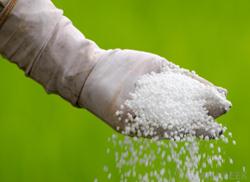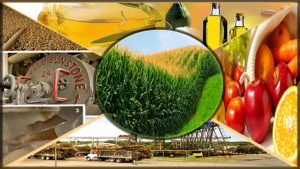Author: Muhammad shahroz khan , institute of horticultural sciences university of agriculture faisalabad pakistan.
Introduction
The macro elements are those which requires in large number by the plant. These are uses in splits and may be given in many forms that is by through foliar application and may through fertigation. If the quantity is short, then plant show some specific symptom for recovery otherwise plant will die.
The micro elements are those which required by plants in minor quantity. Although these elements required in small quantity but their functions play a vital role in the plant growth and their deficiency may cause serious problems in production.
There are some role of function and their deficiency symptoms are given below:
Micro elements
Role of nitrogen in plants
- Nitrogen is essential for Amino acid formation.
- Necessary for cell division and for plant growth.
- Necessary part in Photosynthesis formation.
- Essential for formation and uses of carbohydrates.
- Affects the anabolic and catabolic reactions in plants.
Symptoms of nitrogen deficiency in plants
- Lower leaves show chlorosis (lack of chlorophyll).
- Necrosis in older leaves.
- Reduction in quality.
- Crop mature early but of poor quality.
- Yellow discoloration of leaf tips.
Role of phosphorous
- Essential in seed formation.
- Generate early root formation and growth of plant.
- Enhance the fruit quality.
- Provide tolerance to plant to survive in harsh winter conditions.
- Use for formation and transfer of energy to plants.
- Use in cell division and cell enlargement.
Symptoms of phosphorus in plants
- Mostly occurs in young plants.
- Plants leaf and stem turns dark green.
- Older leaves show purplish discoloration.
- Colour changes due to sugar accumulation.
- Leaf tip become brown and die.
Role of potassium in plants
- Important in carbohydrates metabolism.
- Enhance the translocation of starch.
- Use for water use efficiency.
- Important in enzyme activity and control the reaction rate.
- Enhance the seed and fruit quality.
- Improve the disease resistance.
- Essential in protein synthesis
Symptoms of deficiency potassium in plants
- Not give quick response to plants.
- Reduction in growth rate.
- Burn leaf tips of the plant.
- Reduced straw and stalk in plants.
- Show low protein level.
Role of calcium in plants
- It is part in nitrogen metabolism.
- Decrease plant respiration.
- Enhance fruit set percentage.
- May use for formation and division of cell.
- May start micro-organisms activity.
- Enhance nut development in some fruits.
Symptoms of calcium in plants
- Stem become weak and may die.
- Leaf tip become dry and wilt.
- Leaves become abnormally dark green.
- Cause low transpiration rate.
- Cause formation of pits in fruits.
- Cause brown spots in fruits.
Role of magnesium in plants
- Essential in chlorophyll formation.
- Enhance the utilization and phosphorus mobility.
- Constituent of many enzyme activities.
- Improves the utilization of iron in plants.
- Cause earliness and maturity of plants
Symptom of magnesium deficiency in plants
- Cause inter venial necrosis.
- Leaf margins changes to reddish purple.
- Reduced photosynthetic activity.
- Reduction in enzyme activity.
- Cause ageing of leaves.
Role of sulphur in plants
- Essential element of Amino acid.
- Help in formation of enzymes and vitamins.
- Essential foe seed formation.
- Play important role in chlorophyll formation.
- Formation and permotes nodules.
Symptoms of sulphur deficiency in plants.
- Reduction in protein and chlorophyll synthesis.
- Young leaves become yellow from green colour.
- Stem become spindly and short.
- If not protected all plant become pale green.
- Stunted growth of plant.
Role of boron in plants
- Enhance the pollen germinations.
- Formation of pollen tube.
- Important for cell wall and seed formation.
- Increases the maturity.
- Affects carbohydrates and nitrogen.
- Essential for translocation of sugars.
Symptoms of boron deficiency in plants
- Leaves develop dark brown colour.
- Irregular lesion on leaves.
- Whitish yellow leaves spots on the base of plants.
- Stem become brittle and distorted.
- Flower bud fails in flower formation.
Role of chlorine in plants.
- Give good result with combination of p.
- Increase soil productivity.
- Role in stomatal activity.
- Major constituent of photosynthesis.
- Role in osmotic adjustment.
Symptoms of chlorine deficiency in plants
- Leaves margin become wilted.
- Highly branched root system.
- Spots on leaves.
- Having stubby tips.
- Leaflet tip blade wilting.
Role of iron on plants
- Used as carrier of oxygen.
- Enhance cell division and growth of plants.
- Enhance formation of chlorophyll.
- Essential for respiratory reactions.
- Essential for photosynthesis activity.
Symptoms of iron deficiency in plants
- Reduction in production of chlorophyll.
- Interveinal chlorosis may occur.
- Leaf become whitish yellow.
- Stunted plant growth.
- Field show irregularly yellow shaped area.
Role of copper in plants
- Catalyse many plant process.
- Major role in photosynthesis.
- Important role in reproductive stages.
- Enhance sugar level of plants.
- Minor constituent in chlorophyll formation.
- Improves fruit colour and flavours.
Symptoms of copper deficiency in plants
- Chlorosis in young leaves.
- Stunted growth of plants.
- Cause delay in maturity of fruits.
- Irregular patches on leaves.
- Cause problem in reproductive stages.
Role of manganese in plants
- Catalyse enzyme activity.
- Help in chlorophyll synthesis.
- Enhance the availability of Ca and P.
- Help in pollen germinations.
- Help in root cell elongation.
- Causes resistant against root disease.
Symptoms of manganese deficiency in plants
- Cause interveinal chlorosis.
- Sunken spots between the veins.
- Reduced and stunted growth of plant.
- Deficiency occur when too much iron is applied.
Role of molybdenum in plants
- Essential for conversion of inorganic phosphorus to organic.
- Essential for formation of enzymes.
- Help in nodule formations.
- Regulate enzyme activity.
Symptoms of deficiency of Molybdenum in plants
- Stunted growth of plants.
- Chlorosis in some legumes.
- Leaves become scorched and cupped.
- Leaves become thick and brittles.
Role of zinc in plant
- Helps in enzymes system productions.
- Increase plant growth.
- Essential for chlorophyll formations.
- Helps in seed production.
- Essential for starch formation.
Symptoms of zinc deficiency in plants
- Cause interveinal chlorosis.
- Leaves turn grey-white.
- Damage area become pale yellow or may be of white colour.
- Seed and flower setting is delayed.








